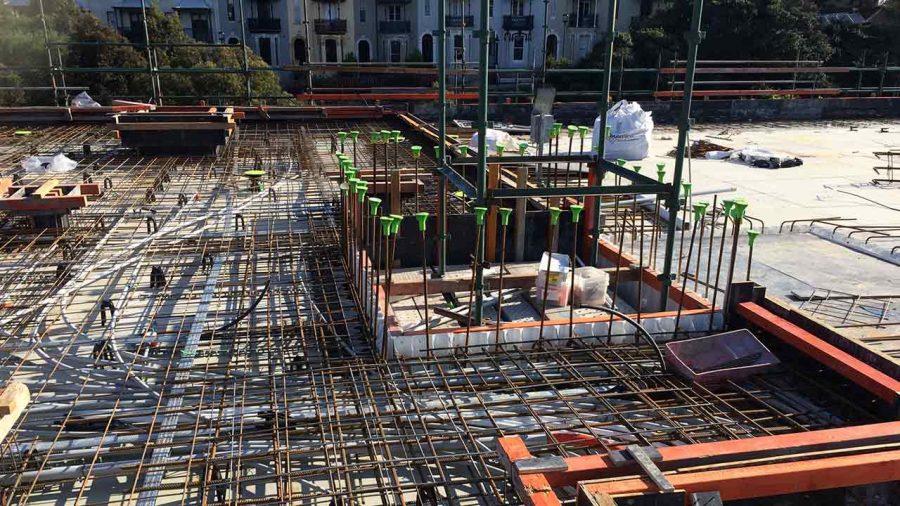When it comes to optimising your construction project in terms of efficiency, productivity, and logistics, there can be no compromise. You have to use the best solutions that will yield the desired results in the shortest amount of time possible, preferably costing less than you have previously planned to spend.

One of the common constituents of an effective construction project is the use of formwork. Formwork has become a staple and a foundation in any construction endeavour, regardless of the size of the undertaking, so let’s take a look at how to use formwork on a construction site for maximum results.
What is formwork?
Simply put, formwork is the mould you would use in any construction process to build walls, columns, slabs, staircases and other concrete structures. The problem with fresh concrete is that it is too heavy to support its own weight, so you need something to keep it in place until it dries.
Formwork is there to support the weight of the concrete, allowing it to dry out in a predefined shape without the risk of spills, or the mix getting outside of the desired shape. In the modern world, formwork is used to build everything from commercial buildings, to residential properties, from stadiums, to your backyard shed.
Types of formwork
Formwork, or rather the materials used to build formwork, can be created from numerous different materials, each with its own benefits. You can expect to see formwork made of timber, plywood, steel, plastic, fiberglass and a variety of other materials.
Formwork also comes with its accessories such as screws, clamps, braces and brackets, or completely prefabricated. They are supposed to be sturdy and meant to last, with steel formwork being the most reliable of all options due to its versatility and recyclability.
Regardless of the material you use, the formwork must tick two essential boxes: lateral pressure, and rate of pour. Lateral pressure will define the amount of pressure the formwork can withstand without breaking under the expansive weight of the concrete.
On the other hand, rate of pour will dictate how fast you can pour the concrete into the formwork without the risk of it cracking under pressure. Wet concrete is heavy, and the faster you pour, the more stress you are putting on the mould.
Using it on a construction site
Firstly, the architect and the contractor will decide on the best type of formwork for the job. For example, these Sydney-based formwork experts use only the finest steel constructions to cut down costs and improve efficiency. Once the formwork system has been approved, it will arrive either in component pieces or assembled.
Don’t forget to instruct the workers to treat the interior of the moulds with a release agent, in order to prevent the mould from sticking to the concrete. This step will be crucial if you want to avoid costly repairs and touch-ups.
With the moulds in place and the concrete mix has been approved, you can proceed to pour the concrete into the formwork. The workers can pour the concrete by hand or through a large hose. Be sure to use a concrete pump to distribute the concrete to hard-to-reach areas.
Once the pour is finished, the workers will use industrial vibrating devices in order to help the concrete settle in properly, and eliminate any irregularities and air pockets. They will also treat the concrete with water or steam, if necessary.
When the concrete has finally dried, the workers will proceed to strip the forms and pile them up in a different area for later use. Remember, formwork is meant to be reused, so make sure it is not destroyed but rather repurposed for another construction project.
Formwork is the basis of all construction endeavours, regardless of their size or complexity. Be sure to pick the right materials and to use formwork properly in order to get the full benefits, increase productivity, and save money in the process.

